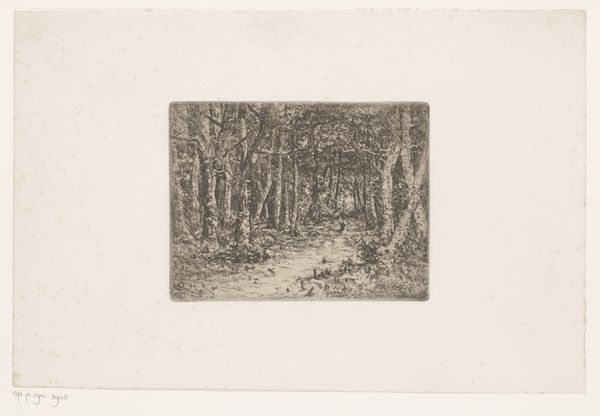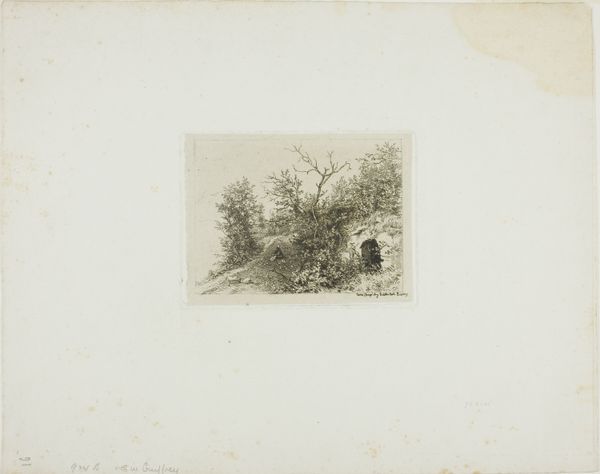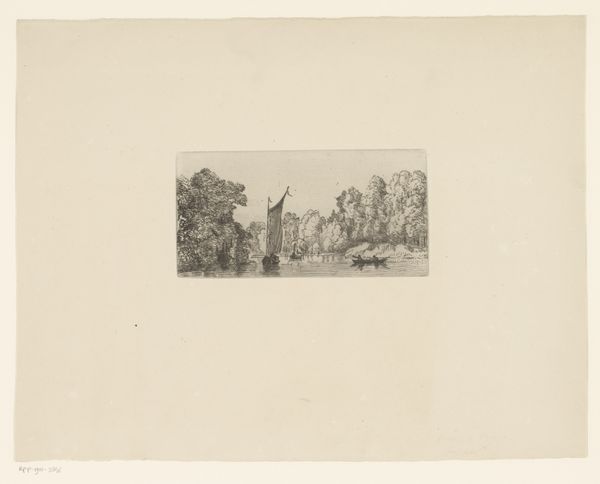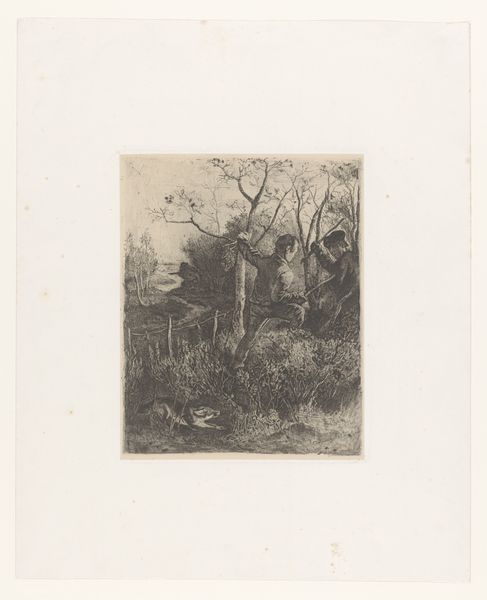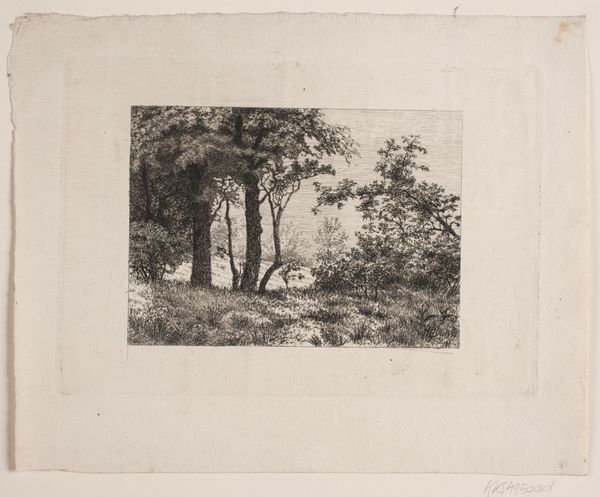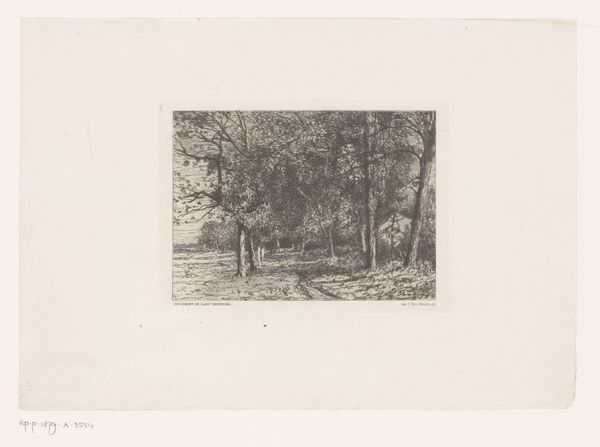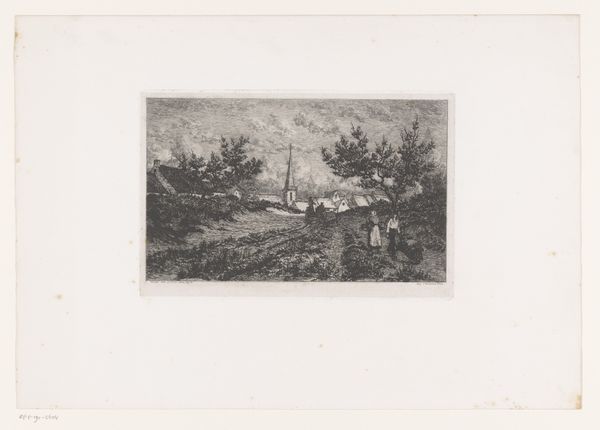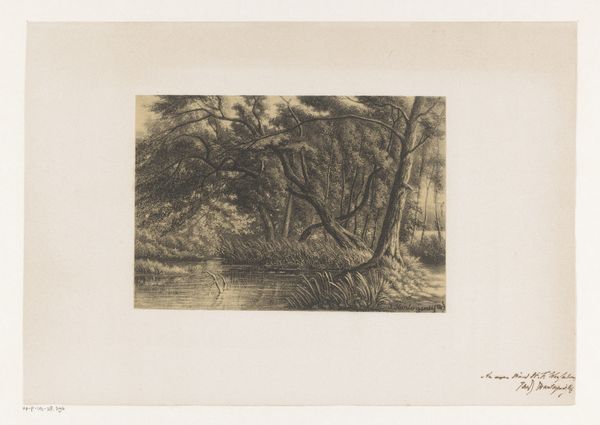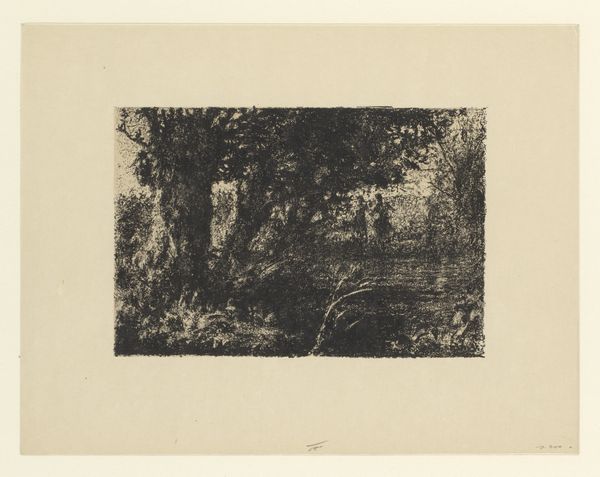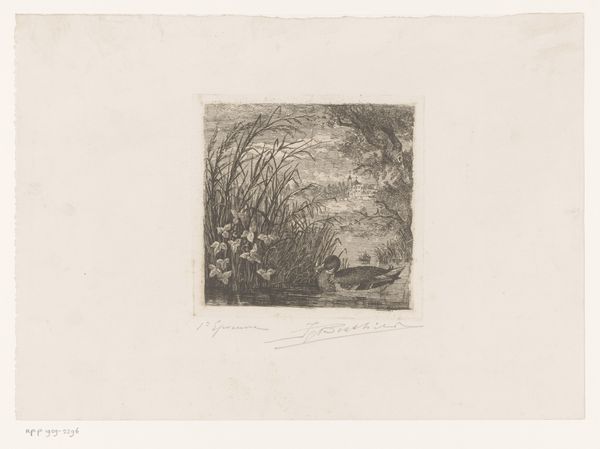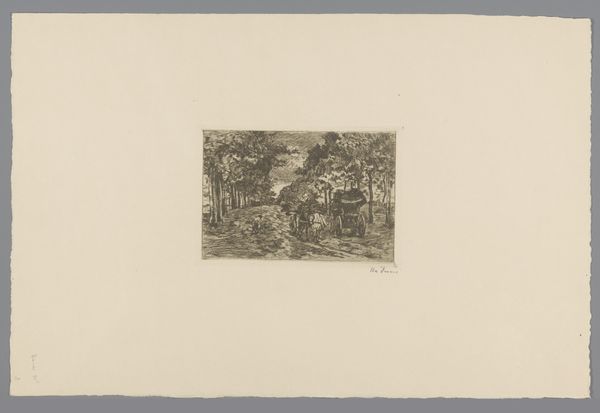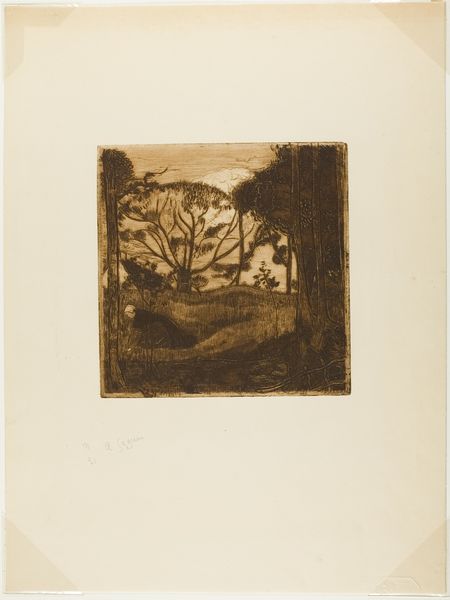
Dimensions: height 155 mm, width 177 mm
Copyright: Rijks Museum: Open Domain
Editor: This is "Huis in landschap bij Moret-sur-Loing," a 1901 etching by Bernard Klene, currently housed in the Rijksmuseum. There’s such a quiet, almost melancholic mood to it. All those intricate lines creating a hazy effect. What stands out to you in terms of how it was made? Curator: Considering Klene’s focus on capturing a rural scene, let's think about his choice of etching. The etching process, involving acid and metal plates, was significantly more industrialized than, say, charcoal. This links him to broader economic shifts – the tension between preserving the countryside and the industrial processes creeping into artistic production. How might the reproducibility of etching change the value or perception of landscapes? Editor: So, the medium itself is almost commenting on the subject matter? A mass-producible image of something natural. Does that imply a kind of commodification? Curator: Precisely. The choice to depict a rural scene using this particular printmaking process raises interesting questions. The act of etching demands a certain kind of labor; it’s more technical, perhaps less traditionally "artistic" than painting directly en plein air, but could have also reached wider audiences, increasing sales opportunities for Klene. Can you imagine this etching circulating widely? Who might have purchased it, and what did they value about the scene it depicted? Editor: I see what you mean. Someone perhaps wanting a piece of the countryside even if they live in the city? It’s not just a pretty picture, it speaks to the changing economy too. Curator: Absolutely! The materials and mode of production locate it within its historical context just as much as the style does. Editor: I never considered the implications of printmaking that way. It really enriches how I look at the artwork.
Comments
No comments
Be the first to comment and join the conversation on the ultimate creative platform.
